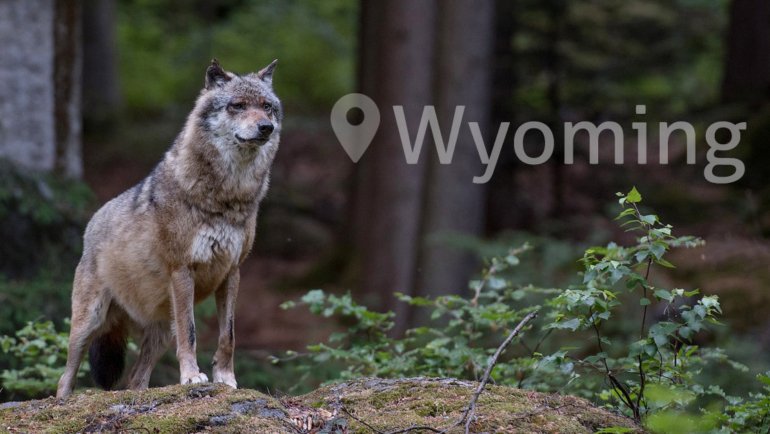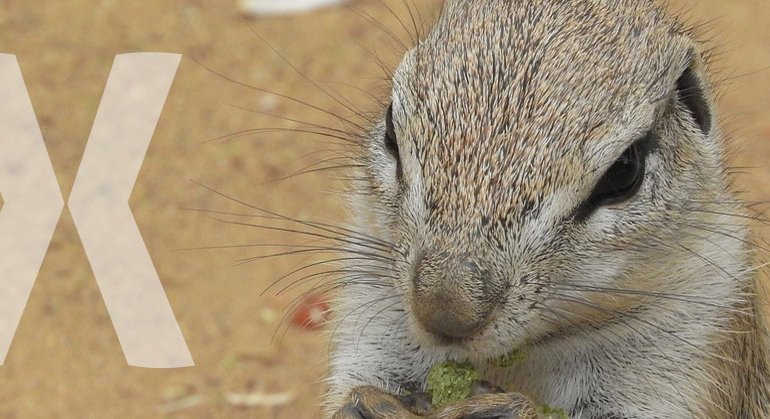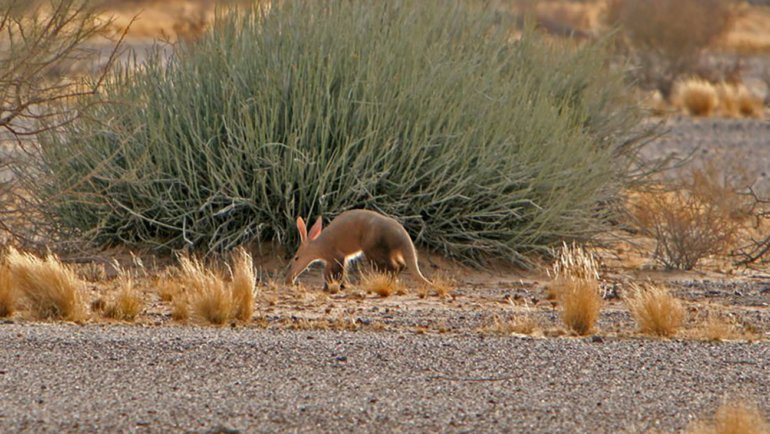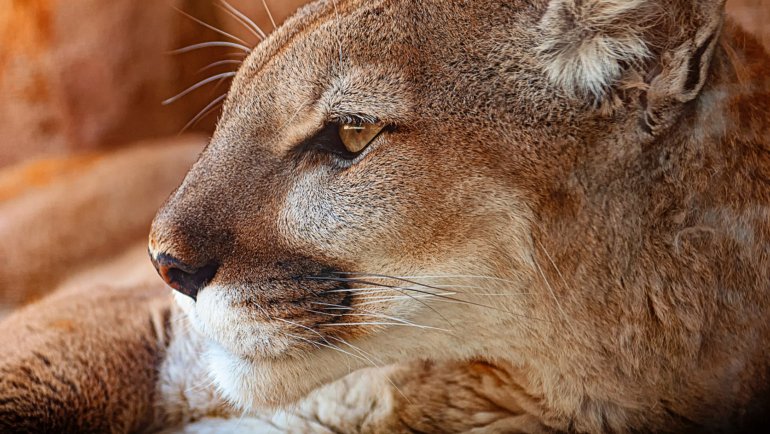In the lush landscapes of North Carolina, where diverse ecosystems range from coastal plains to mountainous terrains, the story of the wolf is one of resilience and survival. Wolves once roamed freely here, playing a crucial role in maintaining ecological balance.
Today, their presence is a poignant reminder of conservation’s triumphs and challenges. An intriguing fact to note is that North Carolina is home to the only place on the planet where the endangered red wolves are found in the wild, making the state a critical haven for this rare species.
Are There Wolves in North Carolina?
Yes, North Carolina does have wolves, specifically the critically endangered red wolves. However, their numbers are precariously low and their presence is restricted to a designated recovery area.
How Many Wolves Are There in North Carolina?
The red wolf population in North Carolina has fluctuated over the years due to various conservation challenges. Estimates suggested there were around 20 to 30 wild red wolves in the state, but these numbers could have changed. The wolves are found in the northeastern part of the state within the Albemarle Peninsula.
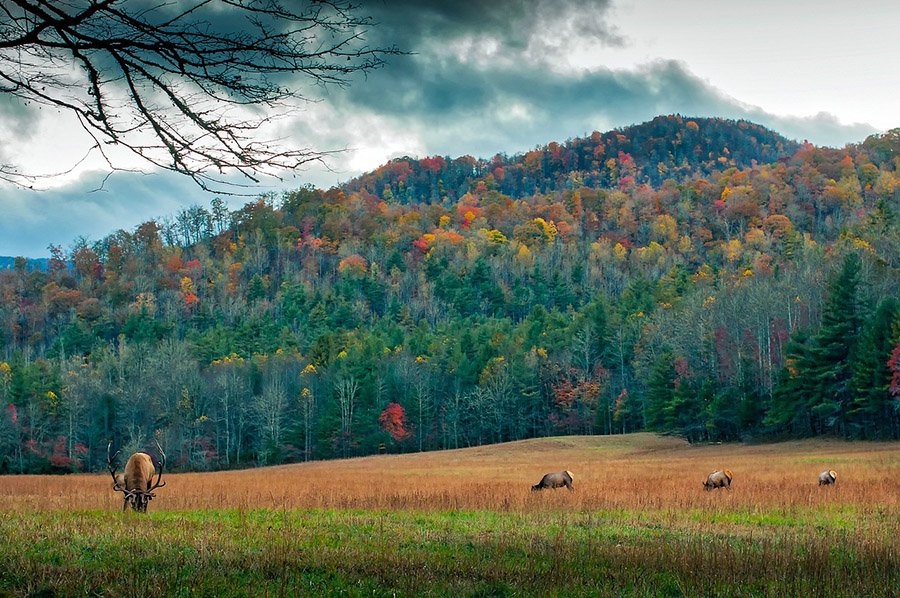
History of The Presence of Wolves in North Carolina
Red wolves (Canis rufus) are native to the southeastern United States, with North Carolina being a significant part of their historical range.
With European settlement and the subsequent development, habitat loss, and intensive predator control programs, red wolves were nearly exterminated from the wild by the mid-20th century.
In an attempt to save the species, the U.S. Fish and Wildlife Service captured the remaining individuals for a captive breeding program (the Red Wolf Recovery Program), which became the foundation for reintroduction efforts.
In 1987, red wolves were reintroduced into the wild in North Carolina’s Alligator River National Wildlife Refuge, marking the world’s first attempt to return a top predator to its native habitat. Despite challenges, this program remains a cornerstone of red wolf conservation.
What Wolf Species and Subspecies Are There in North Carolina?
North Carolina is home to a unique and critically endangered species, the red wolf (Canis rufus). Occupying a precarious position as the world’s most endangered canid, these wolves are the only wild population of their kind, nestled in the eastern parts of the state.
Unlike their larger relative, the gray wolf, red wolves are of medium build, weighing between 45 and 80 pounds, and possess a distinct fur pattern.
Their coats exhibit a beautiful mix of cinnamon and buff with hints of black along the back, and a characteristic reddish hue accentuating their ears, head, and legs.
Red wolves are versatile in their diet, primarily hunting small mammals like rabbits and rodents. However, their opportunistic nature leads them to enjoy a varied diet that can include insects, berries, and the occasional deer.
The social structure of red wolves is centered around monogamous pairs forming the heart of small, tight-knit packs. These family units are cooperative, particularly when it comes to the rearing of their young.
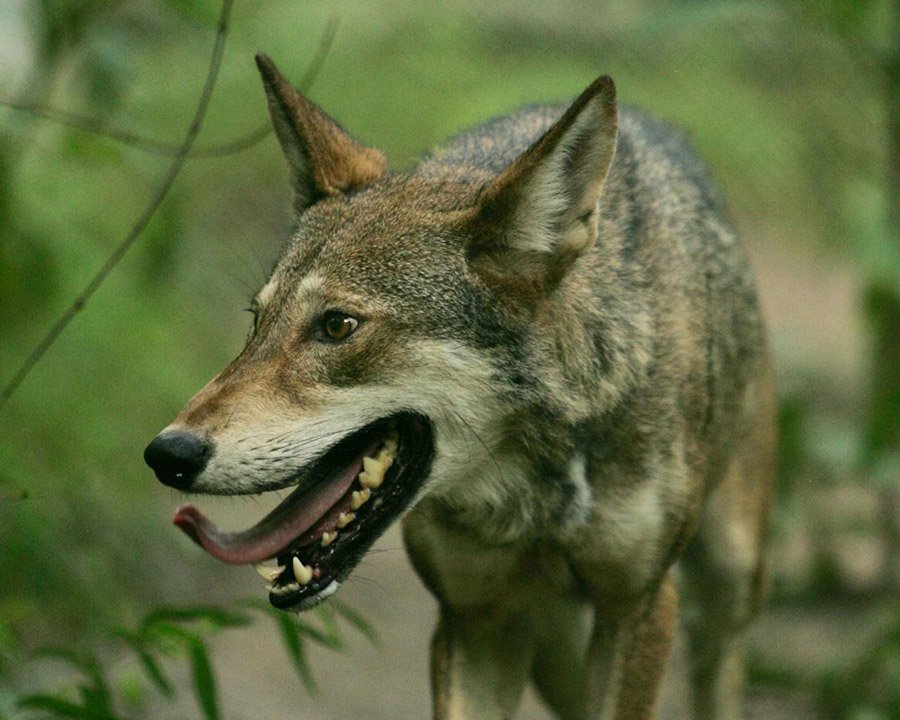
Where Do Wolves Live in North Carolina?
Once roaming freely across the Southeastern United States, the red wolf now clings to survival in the northeastern sectors of North Carolina, with the Alligator River National Wildlife Refuge acting as their sanctuary. This region, including the Albemarle Peninsula, serves as the modern confines of their existence.
The distribution of the red wolf has witnessed significant constriction over time, primarily due to human-driven habitat destruction and relentless persecution.
The reintroduction efforts of 1987 offered hope, yet even within their limited designated ranges, the red wolves face ongoing challenges from human expansion, illegal killings, and genetic dilution from interbreeding with coyotes.
The loss of habitat for the red wolf is exacerbated by agricultural development converting wild areas to farmland, urban sprawl encroaching upon natural landscapes, and road construction that not only fragments their territory but also increases the risk of fatal encounters with vehicles.
Moreover, climate change looms as an omnipresent threat, with the potential to transform and even diminish the red wolves’ habitable range.
Are Wolves Protected in North Carolina?
The red wolf’s endangered status under the Endangered Species Act affords it substantial legal protection and has spurred a variety of conservation measures. The U.S. Fish and Wildlife Service spearheads recovery and management initiatives, with the North Carolina Wildlife Resources Commission providing additional support at the state level.
Human-wolf interactions, particularly concerning livestock predation, are monitored closely, though such incidents remain rare. When they do occur, affected parties are eligible for compensation through programs established by the USFWS. To mitigate potential conflicts, a variety of non-lethal deterrents are employed, including the use of flagging and guard animals.
One of the key components of red wolf conservation is education and outreach, aimed at fostering a harmonious coexistence between humans and wolves. Through school programs, community workshops, and events, the public is made aware of the red wolf’s plight, its ecological significance, and the ongoing efforts to secure its future.
Research and monitoring are pivotal, contributing to a better understanding of wolf behavior and aiding in the development of strategies to minimize human-wildlife conflicts.

Ecological Impact and Importance of Wolves
The red wolf is a fundamental species of North Carolina’s biodiversity. As apex predators, wolves play a pivotal role in maintaining the delicate balance of their habitats.
They regulate prey populations, ensuring that deer and smaller mammals do not overgraze vegetation, which can lead to soil erosion and diminished biodiversity. By curtailing mesopredator populations, such as raccoons and foxes, wolves enable a greater diversity of bird species and other small animals to thrive.
In the absence of a healthy wolf population, North Carolina’s ecosystems could experience trophic cascades, where unchecked prey populations could degrade forest understories, impede the regeneration of certain plant species, and alter the ecological dynamics that are crucial for a healthy environment.
The presence of the red wolf is thus not merely a matter of species conservation but one of ecological integrity.
Where to Observe Wolves In North Carolina
Where to See Wolves in the Wild
For those hoping to catch a glimpse of the elusive red wolf, the Alligator River National Wildlife Refuge provides the best opportunity.
This refuge, along with the Pocosin Lakes National Wildlife Refuge, creates a protected haven where these wolves can roam relatively free from human interference. Wildlife enthusiasts are advised to maintain a respectful distance, ensuring minimal impact on the wolves’ natural behavior.
Observing these animals in their natural habitat requires patience and a bit of luck. Dawn and dusk are the times when wolves are most active, and visitors are more likely to hear their haunting calls than to see them in the flesh.
To increase the odds of an encounter, guided tours with wildlife experts can be a rewarding investment, providing insight into the wolves’ lives and their environment.
Where to See Wolves in Captivity
For those who wish to see wolves in a more controlled setting, the North Carolina Zoo in Asheboro is home to a variety of wildlife, including a pack of red wolves. Although not in the wild, the zoo’s efforts in education and conservation provide visitors with an intimate look at these remarkable animals and their behaviors.
Ecotourism, particularly focused on the red wolf, has the potential to be a powerful conservation tool. By fostering an appreciation for these wolves and their role in the ecosystem, visitors leave with a deeper understanding and a personal connection to the conservation efforts. This understanding can lead to advocacy and support, both critically needed for the survival of North Carolina’s wild heritage.
What Other Major Predators Can Be Found in North Carolina?
- Coyotes: These adaptable canines are found across the state, from coastal plains to mountainous regions. Although smaller than wolves, coyotes are opportunistic feeders that can impact populations of smaller mammals and occasionally deer.
- Bobcats: Stealthy and solitary, bobcats roam the state’s forests and swamplands. Their presence helps control populations of rodents and rabbits, maintaining the balance that could otherwise be disturbed by overgrazing.
- Black Bears: As the largest land mammals of North Carolina, black bears forage through a variety of habitats, from dense forests to mountain slopes. While primarily omnivorous, their predation helps to manage populations of cervids and other mammals.
- Birds of Prey: Raptors such as the red-tailed hawk and the great horned owl are apex avian predators. Their keen eyesight and swift hunting keep the ecosystem in check from above, managing populations of small mammals and birds.
- Alligators: In the southeastern wetlands of the state, alligators lie in wait as formidable predators. These ancient reptiles help to maintain the aquatic food web, ensuring a balance between predator and prey.
In the absence of a robust wolf population, these predators’ roles become more pronounced as they fill the gaps left in the food chain. The ecological relationships with wolves, where present, are intricate. Wolves typically curb coyote populations, for instance, which can lead to an increase in smaller mammals—a cascading effect through the food web.
The Future of Wolves in North Carolina
The survival of the red wolf in North Carolina hangs in a delicate balance. Conservation efforts, spearheaded by the U.S. Fish and Wildlife Service and various non-profit organizations, are ongoing.
These include habitat preservation, scientific research, and breeding programs aimed at bolstering the wild population. The Red Wolf Recovery Program is a beacon of hope, aiming to re-establish this species within its historical range.
Challenges, however, are formidable. Genetic purity, human encroachment, disease, and illegal killings are but a few of the hurdles that red wolves face. Public opinion and policy shifts play a significant role in determining their future.
The outlook is a mix of concern and cautious optimism. Recovery and expansion of the population are possible, but it requires a sustained commitment from conservationists, policymakers, and the public alike.
Frequently Asked Questions
Are red wolves just a type of coyote?
No, red wolves are a distinct species, although they can hybridize with coyotes, which is a conservation concern.
Can red wolves be dangerous to humans?
Red wolves are typically shy and avoid humans. There have been no recorded attacks on humans by red wolves.
Why protect a species that is so rare?
Biodiversity is key to a resilient ecosystem, and protecting the red wolf also means safeguarding countless other species that share its habitat.
How can I help red wolves?
Supporting conservation programs financially, advocating for protective laws, and spreading awareness can all contribute to the red wolf’s survival.
Are red wolves only found in North Carolina?
While the only wild population is in North Carolina, red wolves are also part of captive breeding programs across the United States.
Status of Wolves in Other US States
- Alabama
- Alaska
- Arizona
- Arkansas
- California
- Colorado
- Connecticut
- Delaware
- Florida
- Georgia
- Hawaii
- Idaho
- Illinois
- Indiana
- Iowa
- Kansas
- Kentucky
- Louisiana
- Maine
- Maryland
- Massachusetts
- Michigan
- Minnesota
- Mississippi
- Missouri
- Montana
- Nebraska
- Nevada
- New Hampshire
- New Jersey
- New Mexico
- New York
- North Carolina
- North Dakota
- Ohio
- Oklahoma
- Oregon
- Pennsylvania
- Rhode Island
- South Carolina
- South Dakota
- Tennessee
- Texas
- Utah
- Vermont
- Virginia
- Washington
- West Virginia
- Wisconsin
- Wyoming
